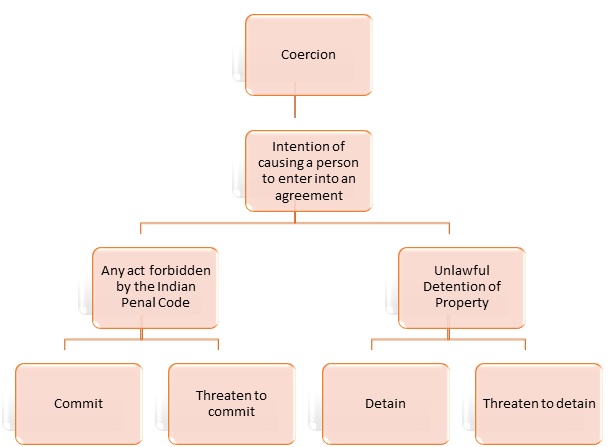Offences against Public Tranquility - Part I - Unlawful Assembly
INTRODUCTION
Public tranquillity means a peaceful and calm society. In this chapter, act(s) that disrupt the peace and calm of the society are concluded as an offence against public tranquillity. These offences are generally termed as group offences. They can be placed between offences against the state and offences against individuals and their property. These offences can be categorised under 5 sub-headings:
Unlawful assembly
Definition and purpose of unlawful assembly - s. 141
Who is a member of unlawful assembly and its punishment – ss. 142 - 143
Who is a member of unlawful assembly with deadly weapons and its punishment – s. 144
Being a member of an unlawful assembly despite knowing that it has been commanded to be dispersed – s. 145
Punishment for an offence committed by any member of the unlawful assembly in furtherance of common object – s. 149
Hiring or conniving at hiring members for unlawful assembly – s. 150
Getting hired to do work for unlawful assembly – s.158
Punishment for harbouring persons hired for unlawful assembly – s. 157
Rioting
Definition of Rioting and its punishment – ss. 146-147
Punishment for rioting with deadly weapons – s. 148
Aiding riot in different ways – ss. 152, 154-156, 158
Punishment for owner or occupier of the land where the unlawful assembly is held or riot is committed – s. 154
Liability of the owner or occupier who knew and was benefitted from the act or riot conducted by an unlawful assembly – s. 156
Liability of person(s) who knew and were benefitted from the riot committed by unlawful assembly – s. 155
Belonging to an assembly of five or more persons when ordered to disperse (s. 151).
Promoting enmity between different classes – ss. 153A, 153AA, and 153B
Affray – ss. 159-160
In this article, we would deal with unlawful assembly only.
MEANING OF UNLAWFUL ASSEMBLY
Unlawful has been defined under black’s law dictionary as “That which is contrary to law or
unauthorized by law.”
Assembly, in general, is a group of persons gathered together in one place for a common purpose.
Combining the two, it can be stated that an unlawful assembly is a group of persons with a common objective or purpose, in criminal law, the purpose has to be illegal or unlawful.
To constitute an Unlawful assembly three major ingredients should be satisfied:
Five or more persons as an assembly;
However, in the case of Ram Bilas Singh v. State of Bihar, [1964] 1 SCR 775, the Supreme Court held that less than five persons can also be convicted under unlawful assembly if:
(i) the charge proves and the court is satisfied with the evidence that apart from the persons convicted, there were several other unidentified people with common object were also members of the unlawful assembly; or
(ii) the first information report and the evidence prove the presence of such persons even though the charge does not; or
(iii) even though the prosecution witnesses and the charge only proved the accused guilty of the offence in question, there is other evidence that discloses the presence of (un)identified persons.
Provided that the evidence given for unidentified persons and other claimed persons of any unlawful assembly has to be proved without any reasonable doubt and has to be accepted by the court.
However, if 7 persons were accused and 3 were acquitted than the remaining four cannot be held liable for rioting as a member of unlawful assembly. Because until proved otherwise, 3 members cannot be convicted under unlawful assembly (Kartar Singh vs State of Punjab, AIR 1961 SC 1787).
They must have a Common object;
The common object must be one among the five as specified under s.141 of IPC.
What is Common Object?
The word ‘object’ means the purpose or design and, in order to make it ‘common’, it must be shared by all.
Emphasis is on common object and not on common intention.
May be formed by express agreement after mutual consultation, but that is by no means necessary.
May be formed at any stage, by all or few members.
Once formed, it need not continue to be the same. It may be modified or altered or abandoned at any stage - Raj Nath v State of Uttar Pradesh, (2009) 4 SCC 334.
The common object must be from the five given criteria as stated under section 141 of IPC:
To overawe by using criminal force or show criminal force, to Central or any State Government or Parliament or any State Legislature or any public servant;
A person is said to overawe another when he restrains him by awe, intimation or fear of superior influence.
To resist the execution of any law or legal process;
Consider an example where a man was arrested lawfully by a police inspector for a road accident. A group of friends assembled together to rescue that friend from a police station or police custody. In such a case, all the friends would be punished under offences against public tranquillity for forming an unlawful assembly and interfering with the execution of the legal process. However, if the police officer would have been exceeding its power and would have been arrested the man for no reason, in such a case there would be NO execution of legal process hence no unlawful assembly be formed – State of Uttar Pradesh v Niyamat, AIR 1987 SC 1652.
To carry out any mischief or criminal trespass or any other offence;
the clause is not restricted only to ‘mischief’ and ‘criminal trespass’. According to the ordinary principles of interpretation, the ‘other offence’ must be ejusdem generis, falling within the same species as the previous two offences viz, mischief or criminal trespass. Noorul Huda Maqbool Ahmed v. Ram Deo Tyagi, 2011 7 SCC 955, stated that any trespass or mischief committed in pursuance of a lawful act shall not be rendered criminal.
By use of criminal force:
(a) Taking or obtaining possession of any property movable or immovable, corporeal or incorporeal;
(b) To enforce any right; and
(c) To enforce any supposed right.
Though, this clause does not apply to the right of self-defence as given under 105. For eg. A group of persons assisting a person in fighting against dacoits shall not be rendered as unlawful assembly.
With the use or show of criminal force compels any person to do any illegal act.
If all the ingredients are satisfied then the assembly is known to be an unlawful assembly.
Determination of common object may be made from:
the number and nature of injuries on the body of the victim - Gokul v. State of Rajasthan, AIR 1972 SC 209.
the nature of weapons used - Madru Singh v. State of Madhya Pradesh, AIR 1997 SC 3527
the manner and sequence of attack - Rachamreddi Chenna Reddy v. State of Andhra Pradesh, (1999) Cr LJ 1445(SC)
before convicting, the court must give clear finding regarding the nature of the common object and that the object was unlawful - Bhudeo Mandal v. State of Bihar, AIR 1981 SC 1219.
the exact sequence of events important in deriving or refuting inference of common object - Sita Ram v. State of UP, (1998) Cr LJ 287 (Raj).
MEMBER OF UNLAWFUL ASSEMBLY
If a person being aware of facts that an assembly is unlawful one, intentionally joins or continues to stay in the same would be a member thereof and would be punished with imprisonment for up to 6 months or with fine or with both as given under section 143 of IPC. However, the continuation does not mean mere physical presence, active presence by the common object shall be construed to be a member and not just a mere bystander or curious onlooker.
UNLAWFUL ASSEMBLY WITH DEADLY WEAPON
Furthermore, if any member of the unlawful assembly carries a deadly weapon, then such person shall be liable for enhanced punishment of imprisonment extending to two years or with fine or with both as provided under section 144 of IPC.
UNLAWFUL ASSEMBLY COMMANDED TO DISPERSE
There are many times when a lawful authority or government commands an unlawful assembly to disperse and not disrupt public peace. In such situation, if any person joins or continues to remain a part of that unlawful assembly knowing that they are commanded to disperse are to be punished with imprisonment that can extend to two years or fine or with both.
NON-UNLAWFUL ASSEMBLY COMMANDED TO DISPERSE
However, when any assembly which is NOT unlawful, is commanded to be dispersed despite knowing the commandment, any person who joins or continues to be a part of that assembly would not be punished under section 145. Since section 145 is a specific section that deals with only unlawful assembly, non-unlawful assemblies that are commanded to disperse are dealt under section 151 of IPC. Where if any person joins such assembly is punished with imprisonment for up to six months, or with fine, or with both.
OFFENCE COMMITTED BY UNLAWFUL ASSEMBLY
Section 149 of IPC states that,
“Every member of unlawful assembly guilty of offence committed in prosecution of common object—If an offence is committed by any member of an unlawful assembly in prosecution of the common object of that assembly, or such as the members of that assembly knew to be likely to be committed in prosecution of that object, every person who, at the time of the committing of that offence, is a member of the same assembly, is guilty of that offence.”
This section does not describe a separate offence but provides for vicarious/constructive/joint liability on all the members of the unlawful assembly for the acts done in furtherance of the common object by any member(s) of that unlawful assembly. Provided that the other members of the assembly may or may not know about the likelihood of commission of such offence in the prosecution of common object – Vinubhai Ranchhodbhai Patel v. Rajivbhai Dudabhai Patel, AIR 2018 SC 2472.
The law is clear that membership of unlawful assembly is sufficient to hold such participating members vicariously liable. However, a member who after getting knowledge about the unlawful object disassociated himself with the assembly or tried to stop the assembly from committing such offence shall not be held liable – Kattukulangara Madhavan v. Majeed, AIR 2017 SC 2004.
Consider an example: An unlawful assembly with 15 members is formed to stop the parliament from passing the Farmers bill enabling various changes in Farming legislations which would bring enormous difficulties in the already poor farming profession. One of the members of the assembly killed an MP because the MP assaulted his daughter. The accused stated that his actions were in furtherance of the common intention of the unlawful assembly as by killing one member the bill was not passed. He further claimed that since it was in the prosecution of common intention, all the members should be punished.
Should all the members of the unlawful assembly be punished for the murder of the MP?
The answer is NO. The accused killed the MP due to his personal revenge from the MP. Therefore, the primary intention was NOT to stop the parliament from passing the Farmers bill.
Imagine the same situation with a changed ending. Consider now, the accused killed the MP because if his vote would not be counted, the bill would not be passed. In such a case, the act of the accused would be considered as an act in furtherance of the common intention. Therefore, all the members of the unlawful assembly would be punished.
Ingredients of Section 149:
Unlawful assembly
Commission of an offence by an unlawful assembly
The offence committed was in the prosecution of a common object or the members should have prior knowledge of the likelihood of commission of such offence. A person being a member of unlawful assembly shall not be punished unless he actively participates in the offence or he matched with the common object.
Accused should be a member of the assembly at the time of the commission of the offence.
He should not be a mere bystander or curious onlooker.
Let us understand the difference between common intention and common object.
VIOLENCE IN PUBLIC BY UNLAWFUL ASSEMBLY
When an unlawful assembly uses force in public, every member of the assembly is liable for rioting and would be punished with imprisonment for up to two years or with fine or both.
VIOLENCE IN PUBLIC BY UNLAWFUL ASSEMBLY WITH DEADLY WEAPON
If that rioting is committed with a deadly weapon than the punished would be increased for a term which may extend to three years, or with fine, or with both.
HIRING MEMBERS FOR UNLAWFUL ASSEMBLY
Section 150 of IPC punishes those who help an unlawful assembly in hiring new members or the agents who help people become a member of unlawful assembly. Section 150 states that such people shall be punished as if they are themselves a member of the unlawful assembly.
Getting Hired to do Work for Unlawful Assembly
If a person purposes through actions or words and gets himself hired as a member of an unlawful assembly, he is punished under section 158 of IPC. The punishment to engage or get hired in an unlawful assembly is imprisonment for up to six months or with fine or both. And whoever gets hired or engages in an unlawful assembly with deadly weapons is punished with imprisonment up to two years or with fine or both.
Harbouring Persons Hired for Unlawful Assembly
When a person is hired in an unlawful assembly then knowingly rescuing such a person is a criminal offence. When one hides/harbours a criminal, they suggest that they support their offence and actions. Supporting a criminal is also a crime hence harbouring a member of an unlawful assembly is an offence under section 157 of IPC. Punishment for such offence is imprisonment for up to six months or with fine or with both.
BY
LAWVASTUTAH
References
- KD Gaur: Criminal Law-Cases and Materials, 9th ed.
- PSA Pillai: Criminal Law,12th Edition.
- Ratanlal & Dhirajlal: Indian Penal Code (PB), 36th ed.
- Indian Penal Code 1860.



Comments
Post a Comment